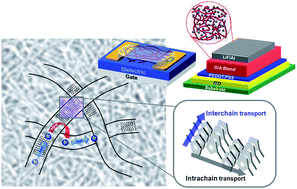Polymer blends with semiconducting nanowires for organic electronics
Abstract
This article reviews the recent advances in organic electronics based on

- This article is part of the themed collection: Organic optoelectronic materials
* Corresponding authors
a
Department of Chemical Engineering, Pohang University of Science and Technology, Pohang, Korea
E-mail:
kwcho@postech.ac.kr
b
Key Lab of Special Display Technology, Ministry of Education, National Engineering Lab of Special Display Technology, National Key Lab of Advanced Display Technology, Academy of Opto-Electronic, Hefei University of Technology, Hefei, China
E-mail:
lzqiu@ustc.edu
This article reviews the recent advances in organic electronics based on

 Please wait while we load your content...
Something went wrong. Try again?
Please wait while we load your content...
Something went wrong. Try again?
S. B. Jo, W. H. Lee, L. Qiu and K. Cho, J. Mater. Chem., 2012, 22, 4244 DOI: 10.1039/C2JM16059E
To request permission to reproduce material from this article, please go to the Copyright Clearance Center request page.
If you are an author contributing to an RSC publication, you do not need to request permission provided correct acknowledgement is given.
If you are the author of this article, you do not need to request permission to reproduce figures and diagrams provided correct acknowledgement is given. If you want to reproduce the whole article in a third-party publication (excluding your thesis/dissertation for which permission is not required) please go to the Copyright Clearance Center request page.
Read more about how to correctly acknowledge RSC content.
 Fetching data from CrossRef.
Fetching data from CrossRef.
This may take some time to load.
Loading related content
